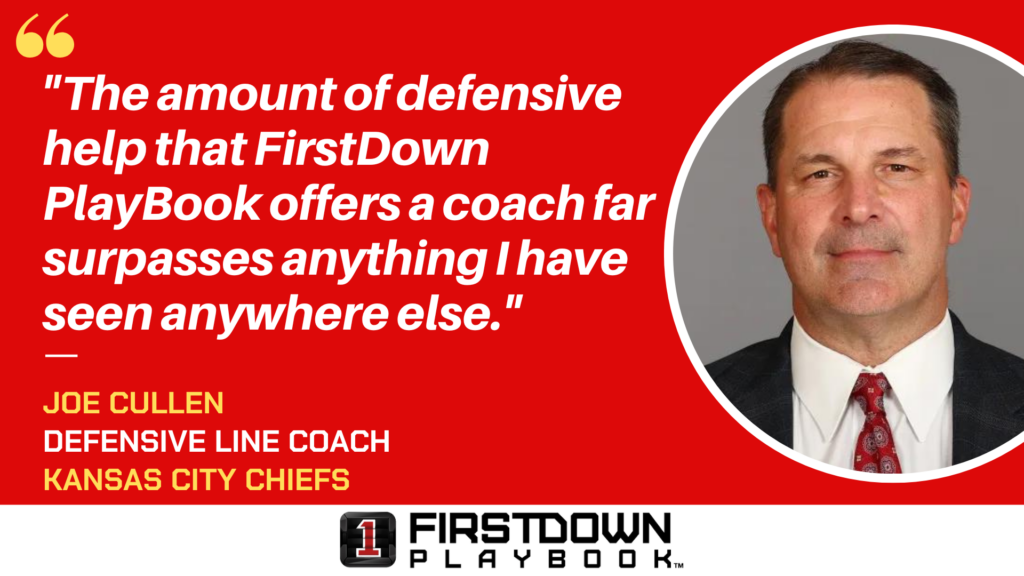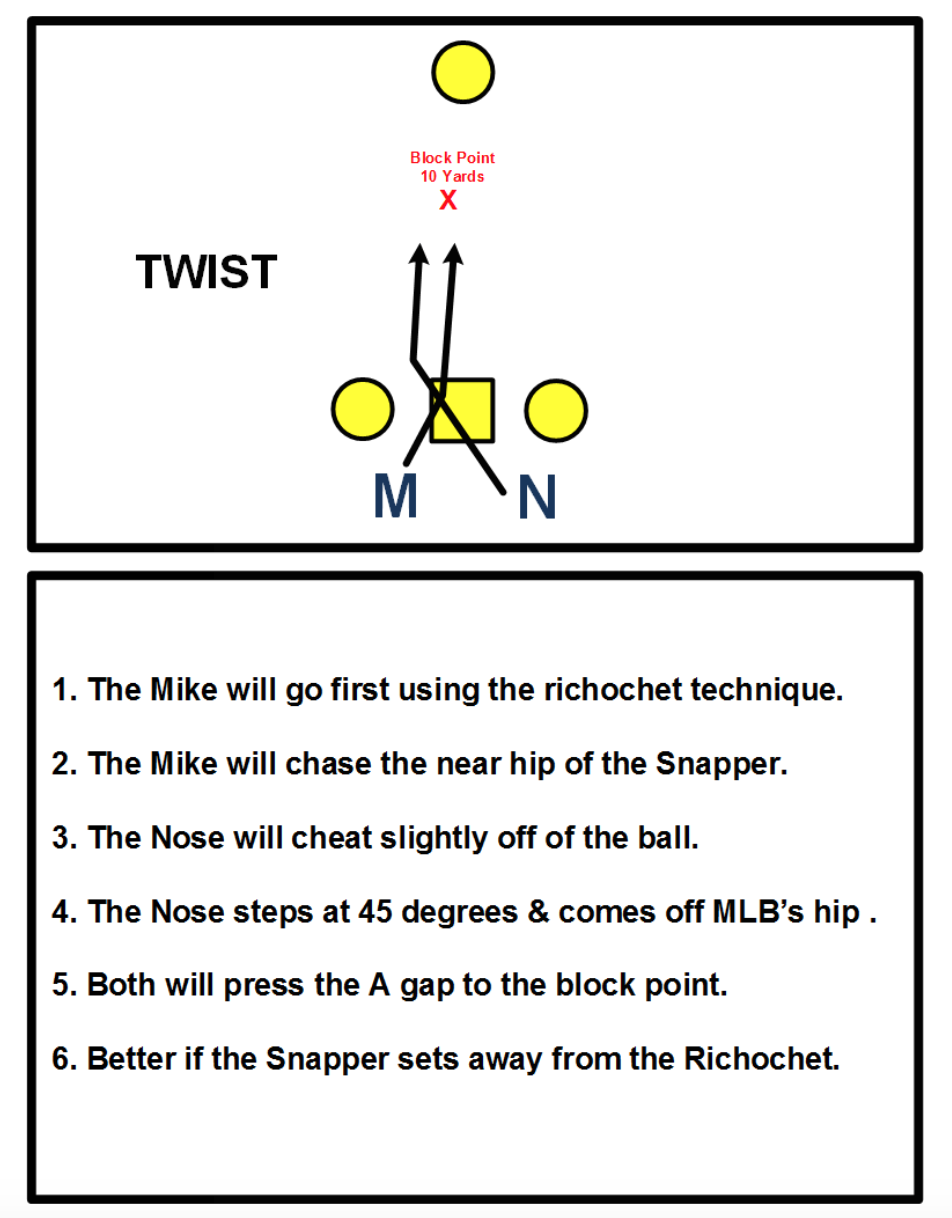Punt Block Or Pass Rush This Twist Stunt Works

Everyone likes to block punts. It’s one of the more explosive plays in football. It is every bit as deflating for the team that is punting as an interception or fumble. Today we want to focus on coaching a twist stunt that if executed properly can be extremely effective against a spread punt scheme. We understand that the NFL is the primary place you can find spread punting.However; this can even be used against a shield or rugby scheme depending on the splits of the punting team.
The “Twist” technique is obviously not used exclusively for rushing the punt. This technique is executed exactly the same way when two Defensive Lineman rush a QB. The biggest mistake that young coaches make when they teach a twist to block punts is that they teach the two rushers to trade gaps. This is playing into the hands of the protection.
In this diagram if the Mike and Nose switch A gap responsibility then the protectors will just trade them off. Sure, you might confuse the protectors every now and then but normally the snapper and two guards will communicate the twist stunt and use zone principles to pick it up.
TAP ON THIS DIAGRAM TO SEE THIS TECHNIQUE EXECUTED
This is why the proper way to teach the twist to block punts is to get two rushers in the SAME gap. In order to do this you need to designate one rusher as a Penetrator and the other rusher as a Looper. In the drawing above the MLB is the Penetrator and the Nose is the Looper.
Field Goal Operation Is Clutch For 4 NFL Teams
The Penetrator (Mike) will attack the Snapper’s hip and his job is to react to the Long Snapper. If the Snapper works towards the Mike then the Penetrator will pick the Snapper as he tries to work this direction. The Snapper is more than likely trying to track the Nose as he loops around. The Looper should wrap as tightly as possible and get going to the block point. After the Mike Picks the Snapper he should continue to the block point also.
Related: FirstDown PlayBook Is Your Clinic Alternative
If the Snapper initially works to the Nose then the Mike LB will chase the Snapper’s hip. This is where most twists get screwed up. The Mike LB does not want to cross the Snapper’s face if he works away. The Mike LB wants to use a “ricochet” technique off of the Snapper’s hip and stay in the front side A gap. This should free him up to the block point on the twist stunt.
This allows your twist to be effective regardless of which way the Punt protection is turning. However, it is still a good idea to study the protection scheme for tendencies when you are attempting to block punts. If the Snapper always protects to his right or his left then your job just got a lot easier. Normally you want your Penetrator away from the direction that the Snapper turns. This is why good Defensive Line Coaches and Special Teams Coaches spend a ton of time studying the Center/Snapper for protection tendencies.
This Twist Stunt Technique Is The Same For Pass Rushers As It Is For Punt Rushers
We have only used the Snapper and Guards for our example in this diagram. Any twist should be executed with this principle in mind. The rules hold true if it was a Guard and Tackle that you were executing the twist on also.
So the next time you coach up your scheme to twist and free up one of your players to the block point (or quarterback) be sure to make them understand that you are not just trying to trick or confuse the protection by exchanging two gaps. You are purposefully attacking one gap and freeing your blocker up with scheme and technique!

